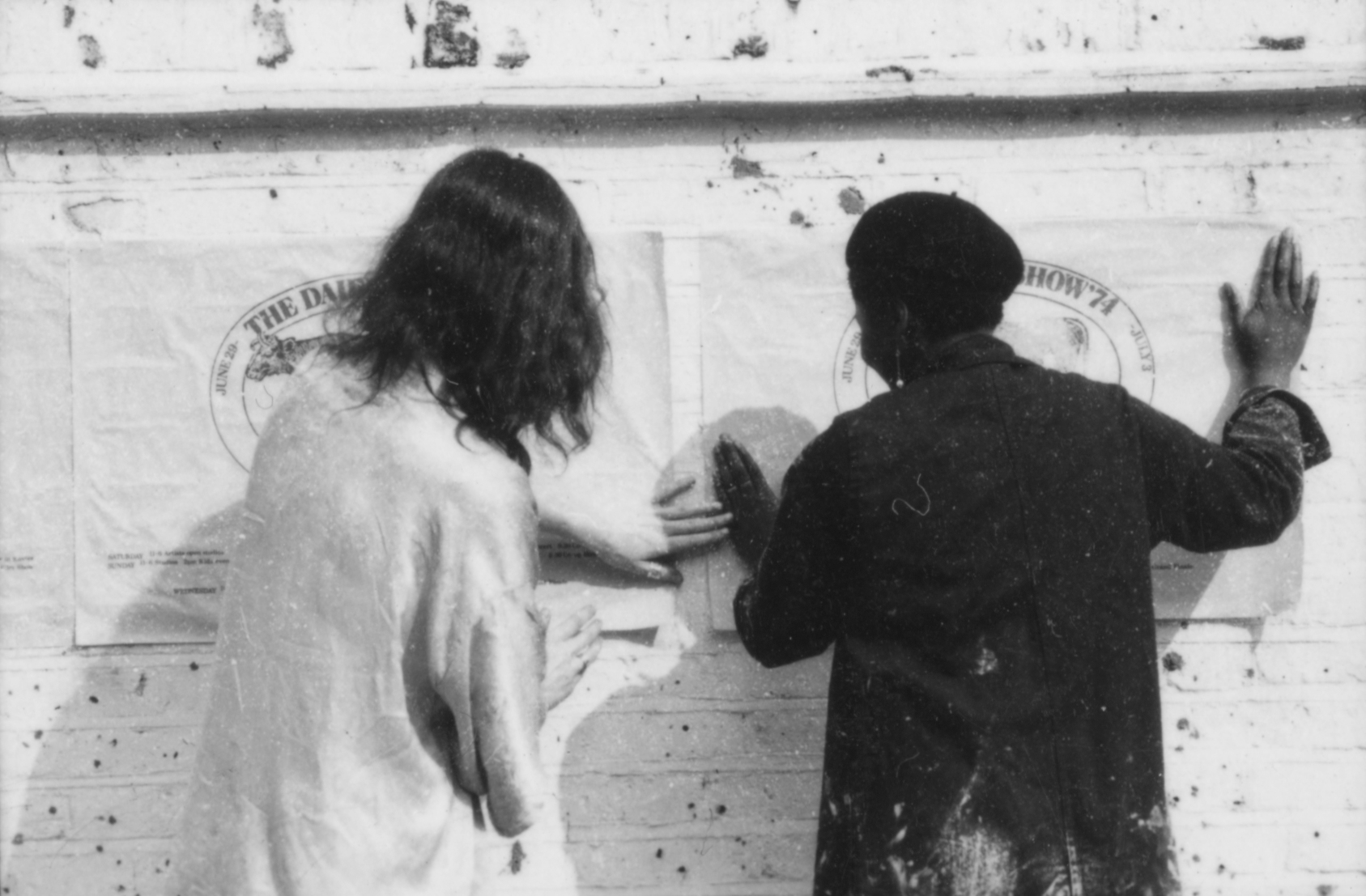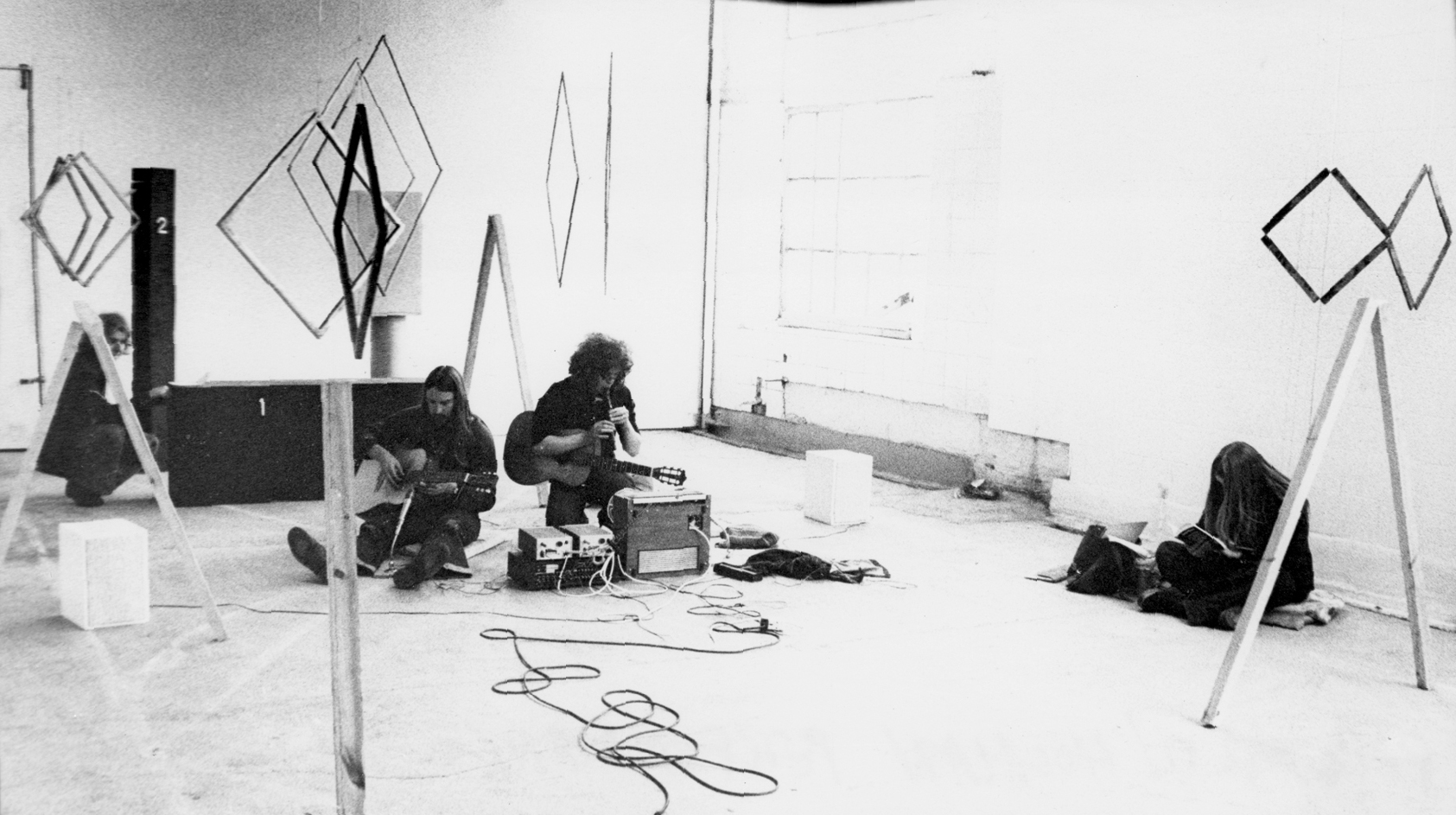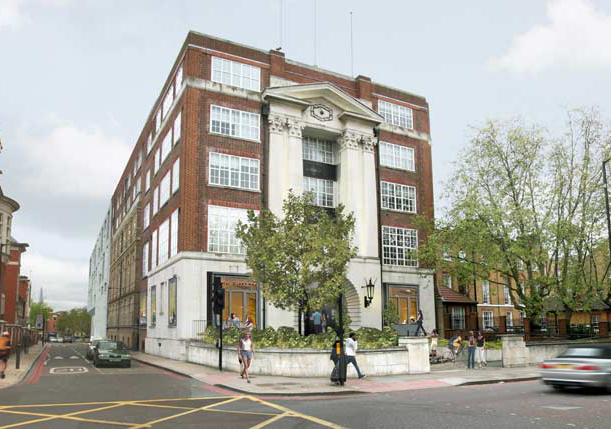
The Dairy, Kentish Town
“I think Graham Stevens was the only person [who moved into the Dairy] from St Katharine Docks, but I may be wrong. [The Dairy] was unlike other SPACE buildings in that it had a much wider range of art practice. I think the reason for this was that the building had been initially taken over by the Arts Lab, not SPACE. The Arts Lab movement was founded by an American, Jim Haynes, in the 1960s in Covent Garden and then moved to just off the Hampstead Road then to the Dairy. Jim Haynes had moved to Paris by then so the Arts Lab movement had more or less come to an end. I can’t remember which organisations/people came from the Arts Lab except for the London Film-makers Co-op and the Photo Co-op. Awake, the African drummers, were Arts Lab members I think. CATS video makers, which included John ‘Hoppy’ Hopkins lived across the road [….] I’m not sure if they had been part of the Arts Lab but they were rehoused from the Dairy with our help. The Arts Lab was based in performance rather than the traditional fine arts which SPACE dealt with. It was sort of hippy and ground breaking. I don’t know how SPACE took on the Dairy but I think the Arts Lab approached SPACE because the building was too big for them and they didn’t want to run it themselves. SPACE also had a charity status which helped keep rents down.
As the name suggests, the building itself had been a dairy. It had a large yard which was used for parking, making things, vehicle repair, and performances. For a time, film-maker David Larcher parked his two trucks there (his son was born in one of them) and Adam Brown (?) lived in his converted double decker bus there – and drove several of us to Knebworth Festival in it. The river Fleet ran through the basement – the dairy had had pumps to keep the water out but turned them off when they left, so the basement gradually filled up with water and every now and then someone would walk down in the dark and get soaked. Most people had large studios because they were very cheap. At that time the Arts Council paid for calor gas heaters (which are now illegal). The roof was flat and someone set up a hydroponic green-house there.
The Dairy was on one side of Prince of Wales Crescent, right in the middle of a community of squatters and students as well as two local community-based arts organisations – Interaction and Action Space. One was in Harmood Street, which backed onto the Dairy, and the other was just by West Kentish Town overground and run by an American, Ed Berman, who was quite famous for his work at that time. Student Community Housing (SCH) was based in the area where housing as well as light industrial buildings were being taken down. It was a sociable building and we spent time together and worked together, friends visited a lot, there was a grand piano in the caretakers’ flat and people would drop in for jam sessions. The LFMC had regular film shows which drew people to the building (they had no seats so the audience lay on mattresses on the floor). There were sub groups within the building and a number of the studios were used by groups who were friends with whoever had the studio. Bob Janz, for example, was an American who was lecturing at Hornsey and loaned his studio to all sorts of music and performance events. We were also part of a bigger community, there was always something going on in Prince of Wales Crescent, including music events, a community café and health food shop. All this gave me an interest in performance, interactive art and working with the community which I think was shared by many of the artists in the Dairy.”
Extract from ‘The Dairy and the 1975 Open Studios’ by Shirley Read in Artists in the City: SPACE in ’68 and beyond.






























